1.
Introduction
STEM (science, technology, engineering, and mathematics) education has been increasing in the United States in regard to international talent competition. In the twenty-first century, the United States regards STEM as capital to help improve the strength of science and technology and as a means to reserve scientific and technological talent. This phenomenon has attracted widespread attention worldwide. The impetus of the information age and knowledge economy has deepened the STEM concept; currently, STEM is a type of education that integrates core knowledge in the four disciplines and related fields to develop talent that applies STEM knowledge to solve real-world problems. STEM, as an educational mode that integrates different strands of knowledge and cultivates scientific and technological talent, has been actively explored by frontline practitioners of basic education and university researchers. Engineering is one of the four core disciplines of STEM, and with the development of industry and advancements in science and technology, engineering practice (E) has been increasingly emphasized. Engineering education has been included in many countries' education plans. Currently, the problems and challenges of individuals are becoming more complex, hidden, and diversified. Accordingly, innovative engineering talent with interdisciplinary knowledge, practical ability, and a vision of the future is invaluable.
The National Science Association published the book "Engineering for the K–12 Grades, " in which engineering design and engineering practice are recommended as they constitute a critical teaching pathway. "Design" is defined as a "problem-solving process" through which engineers have the opportunity to apply and integrate different pieces of knowledge, skills, and ways of thinking to obtain details or a comprehensive understanding, choose a plan or create a plan, and choose procedural or stated knowledge to comprehend and solve problems [1]. Procedural knowledge is related to the high-level thinking ability required in tasks such as demand analysis, problem solving, project management, and design optimization in the design process [2]. In STEM education, teachers often use an engineering problem or project as a background to integrate knowledge and promote learning. Such a problem involves an "ill-structured problem" with a vague background; moreover, the precise requirement of such questions and the direction of the answers are not specific. Thus, the problem can have a variety of solutions according to the advantages and experience of the individual who is doing the solving [3]. Engineering problem solving is a soft skill in lifelong learning, and if students are guided in preset situational problems, their meaningful collaboration and independent learning can be cultivated [4]. Additionally, the development of other higher-level thinking abilities can be improved.
Therefore, is there any chance that we can improve students' engineering problem-solving ability through a STEM course? Currently, the problems and challenges of individuals are becoming more complex, hidden, and diversified. Accordingly, innovative engineering talent with interdisciplinary knowledge, practical ability, and a vision of the future is invaluable.
However, in China, although the identification of engineering majors begins in the undergraduate period, engineering education, compared to other subjects such as math and science, was largely ignored in K–12 education for a period of time even though it needed to become more coherent, more developmental, and more systematic. Engineering education has now received considerable attention in all sectors of education [5]. Elementary and secondary education has also changed considerably [6]. STEM curricula have been introduced into many elementary and secondary schools in China; however, few empirical studies have investigated higher-level thinking. Since many schools have now been equipped with 3D printers or laser-cutting facilities, we can use these facilities to design curricula. Among them, STEM courses based on laser-cutting technology are relatively immature. Therefore, this study aimed to explore how to design a STEM course based on laser cutting and whether such a course could help improve students' engineering abilities. The purpose of this study was to explore the following research questions:
1) What STEM course can we develop around the theme of laser cutting?
2) Does a laser-cutting-themed STEM course promote students' engineering problem-solving abilities?
3) What other approaches do students demonstrate in their solutions to the engineering problem?
2.
Literature review
2.1. Investigation of STEM courses and engineering problem solving
Currently, STEM is a theory of education that integrates core knowledge in the four included disciplines and related fields to develop talent that applies STEM knowledge to solve real-world problems. The Next-Generation Science Standards, which were published in the United States in 2013, propose three dimensions, namely, the core concepts of disciplines, interdisciplinary knowledge, and scientific and engineering practices [7]. STEM education is increasingly focusing on the integration of these elements [8]. The idea of STEM is indeed to culture interdisciplinary talent.
How does it do this? Notably, STEM education emphasizes "learning by doing" (e.g., "exploration, " "practice, " or "projects"); thus, problem-based inquiry, project-based learning, and engineering design are typical STEM teaching methods. The Next-Generation Science Standards specify eight "science and engineering practices", namely, asking and defining questions; developing and applying models; planning and implementing exploration; analyzing and interpreting data; using mathematical and computational thinking; building scientific interpretation and designing engineering solutions; participating in real-world situations to gain experience; and obtaining, evaluating, and exchanging information. The processes of engineering design, in the context of Lyn D. English's theory and practice [9], are to define a problem; design probable solutions; devise, test, and evaluate solutions; and redesign and construct. Each process is associated with a corresponding content and behavior. Thus, if we want to culture students' engineering problem-solving abilities, we could instruct them to solve real-world problems through engineering design.
In 2014, Burke, a U.S. scholar, developed the 6E teaching method by combining the 5E teaching method (i.e., engagement, exploration, explanation, elaboration, and evaluation) and the "design and construction" process in engineering design to achieve parallel learning and improve engineering practice [10]. Burke asserted that the core of the U.S. Next-Generation Scientific Standards should be to combine core knowledge, inquiry, and engineering practice.
Many studies have shown that engineering-based learning has effectively improved students' problem-solving skills and scientific performance. Design is a critical factor in engineering thinking [11]. Milbourne asserted that high school physics teaching accentuates problem solving. Nevertheless, such teaching mainly includes problems with an adequately defined structure and few problems with a vague structure; this is consistent with engineering design and the practice of physics [12]. Scholars have explored the relationship between physical science knowledge and the ability to solve problems with an unsatisfactory structure among high school students; they have observed that subject knowledge is positively related to the ability to solve complex problems. Siew determined that an extracurricular activity that combines engineering design and STEM knowledge is helpful in creating opportunities for students to answer complex questions; Siew also demonstrated that students are thus able to improve their innovation, problem-solving, and thinking skills [13].
In a 3-year investigation of integrated STEM teaching involving students in grades four, five, and six, English [14, 15, 9] observed that extracurricular activities enhance students' ability to manage problems in complex tasks. Fan evaluated students' performance and design work through a 10-week STEM-oriented engineering practice course and found that the course positively affected students' conceptual knowledge and higher-level thinking skills, including engineering thinking [2]. In addition, teenagers' and experts' performance in engineering problem solving differs; while both spend a substantial amount of time building models, students spend an insufficient amount of time gathering information and defining the scope of the problem, which means that novices spend less time brainstorming and thinking, judging the feasibility of ideas, and making decisions from a user's perspective [16]. Thus, we could place particular stress on certain aspects when developing our curriculum. Perhaps a problem with a complicated scene and a vague structure is better than the alternative.
The issue of how to evaluate students' ability to solve an engineering problem warrants exploration. It is a process of changing one's thinking and ability. To ensure objectivity, visualizing and quantifying the data and using operable evaluation methods are necessary. Teachers can combine quantitative and qualitative methods, such as preparing open-ended questions for students and then recording and analyzing students' responses. Coding, for example, students' videos, audio, designs, and drawings, is an effective means of assessment.
Engineering problem solving belongs to the field of cognitive psychology. Kothiyal collected and coded students' answers to open-ended questions and used semi-structured interviews to explore students' thinking and approaches to solving problems [17]. Kim used a multifaceted evaluation approach, which drew from student learning activities and project performance, including tests, after-school tasks, project planning reports and presentations, project progress, oral presentations of group projects, project interpretation, and peer evaluations [18]. Božić et al. collected data through observations, field notes, and questionnaires [4]. Therefore, we can see that the current study could use qualitative methods such as coding students' answers and presentations and observing project performance to acquire learners' deep understanding of an engineering problem.
We can learn from Jonassen [19], who determined the behavioral processes involved in solving an ill-structured problem, namely, clarifying the feasibility and background constraints of the problem, clarifying possible perspectives, positioning the related benefits, generating possible solutions, assessing the feasibility of multiple possible scenarios by demonstrating individual perspectives, testing the background and feasibility of problems, implementing and testing the scheme, and adopting the scheme. Combined with the eight scientific and engineering practices, the author revised the engineering problem-solving capability model from English [14]. We posit that the "demonstration scheme" can be added to the "scenario" part of the model below, that "design and construction" can be added between the "argument scheme" and the "testing scheme, " and that "redesign and construction" can replace the "implementation and testing scheme." "Test evaluation design" and "redesign and build" are not necessarily explicit steps (Figure 1).
2.2. Laser cutting
Although laser-cutting technology has been extensively applied in industry, it has rarely been developed as a theme of STEM courses. Laser-cutting technology has been developed for industrial mass production. Recently, laser-cutting equipment has been improved for safety and convenience for school use. As a rapid and digitally controlled design technology, laser cutting is attractive to many individuals because it is relatively fast and convenient and has a lower cost than other processing tools [20]. In laser cutting, a high-density laser is used to irradiate the material of interest. Radiation is applied to the material, which rapidly causes the material to vaporize or melt to achieve the cutting effect. To increase the fun of image and text design, machines on campuses can apply lasers to cut and engrave materials. In 2012, the U.S. government implemented a proposal to equip schools with digital manufacturing tools [21], and many campuses are equipped with machines that also have a tool for smart design.
However, most empirical studies on laser-cutting-themed courses have been conducted in universities. For example, Australian Catholic University [22] combined a laser-cutting machine with other tools for collaborative projects among students in colleges of art design, engineering, and physics to promote interdisciplinary learning. Carvalho proposed an open-source tool designed by laser cutting and sensors for K–12 scientific experiments [23]. In Serbia, Gadjanski combined laser cutting and a numerical control machine with electronic and robotic tools to design low-cost scientific experiments for high school students; the results demonstrated that this method was effective [24]. Liu presented the use of digital-processing tools such as laser cutting and 3D printing in teaching; the researcher recognized the advantages of such tools in fostering engineering thinking [25]. Lu observed the effective promotion of laser cutting for the teaching of industrial product design [26]. Therefore, we can see that laser cutting can be connected with many subjects, including science, engineering and art, because of its infinite possibilities regarding shaping. We can foster students' engineering problem-solving ability through rounds of testing and optimization. The authors of this paper collected some student works from open resources to obtain inspiration, which is explained as follows.
3.
Research design, data collection, and analysis methods
3.1. Participants
The study was implemented in a high school, where a students' science, technology, and fabrication club was established. The participants were new members of a year-10 club, and 20 students (age approximately 16 years old) attended the class.
3.2. Teaching models and course framework
This study combined 6E (5E and engineering design) teaching methods to develop laser-cutting-themed STEM courses and to explore students' engineering problem solving and high-level thinking. Researchers combined the Outline of Curriculum Guidelines for Integrated Practice Activities in K–12 Schools and related literature (Figure 2). This study developed the following reference models for teaching (Figure 3).
This study explored several designs and types of production software. The participants were high school students; thus, the study used LibreCAD free software. Before the formal experiment, the researchers selected the topics "my label" and "roly-poly, " which corresponded to entry and general levels, respectively, in the curriculum plan for pre-experiments; the duration of each was two consecutive hours. The course was attractive to students but had limitations. For example, in the introductory unit (my label), the time was insufficient for modeling. In the comprehensive-level unit (roly-poly), the topic was slightly difficult for students because further preliminary instruction in spatial imagination and sufficient previous knowledge were necessary for full participation in the class. Formal courses opened in the fall semester and were convened every Wednesday; nine courses were implemented, and the duration of each of the nine courses was 50 minutes. The teacher mainly taught "how to design, " and students could discuss with partners and consult with the teacher. The prototype was completed after the class. The club provided students a sufficient amount of time to participate in activities. Additionally, a guide sheet was provided in each lesson, and a "project study list" was provided for the final student assignment program. The final assignment was an authentic problem as follows: in a limited dormitory space, how would you arrange a reasonable space for both resting and learning? The primary task was to design the bed and desk.
The course framework, class allocation, and teaching process are presented in Table 1 and Table 2.
3.3. Data collection and analysis
The data collection tools used in this study are presented in Table 3. The pretest and posttest questionnaires comprised open questions to test students' performance in the use of knowledge and problem-solving skills. Students' responses to problems were observed. The first problem was the construction of community recreation and fitness venues. The theme was adopted from the research of Mentzer [16], who studied the performance and knowledge of high school students in engineering design thinking; the questions were adapted from the International Second Handbook of Science Education [27], which is a guidebook on testing higher-level thinking for problem solving. The second problem, an anti-typhoon design, was taken from the practice base, i.e., the natural weather of southeastern coast of Wenzhou's. The questionnaire is presented in Appendix A. Each student's engineering work was evaluated by the teachers during club meetings. To assess the students' STEM knowledge application and engineering problem-solving skills objectively, the evaluators comprised a general technical teacher, senior members of the club, and the researcher. The scale was designed with reference to how an integrative STEM curriculum can benefit students in engineering design practices [2], combined with specific targets taken from the Outline. The scoring criteria were revised (Table 4).
Open-ended questions and recordings of students' project reporting were used because standard answers were unavailable, and the study referred to the "problem-solving" target of the high school stage in The Outline of Curriculum Guidelines for Integrated Practice in Primary and Secondary Schools and the revised version of the engineering problem-solving model (Figure 1). Several keywords were observed, namely, practice exploration, ask questions, comprehensive analysis of problems, and scientific research. The map is presented in Figure 4. When encoding students' answers and recordings, this study referred directly to the engineering problem-solving model shown in Figure 4.
The study collected qualitative and quantitative data from the students. Moreover, 18 valid pretest questionnaires and 16 valid posttest questionnaires were collected. Each student's work was assessed by three teachers who provided feedback. In addition, a coding analysis was conducted on the recordings of the students' responses to the open-ended questions and on the students' work reports; furthermore, the teacher–student score of the students' work was analyzed descriptively.
4.
Results
4.1. Students' ability to solve engineering problems
For the final assignment, this study collected six completed assignments, with each being completed by a group of three to four students.
4.1.1. Assessment of students' work
The three scorers arranged the dimensions in order of importance as follows: (i) understanding and applying knowledge, (ii) exploring practice and scheme idea, and (iii) designing a functional project. As presented in Table 5, the researcher considered the dimension of understanding and applying knowledge to be the most important; the general technology teacher considered the exploring practice and program scheme idea dimension to be the most vital; and the senior students of the club considered designing a functional project to be the most crucial. Accordingly, the three scorers assigned different levels of weight to the dimensions.
Combined with the scoring criteria in Table 4, according to Table 6, the six groups exhibited different scores for the three dimensions. On average, the six groups exhibited the highest scores on the third dimension and the lowest scores on the first dimension. The students' behavior was steady in the second dimension "exploring practice and program ideas, " which indicated that they had a certain awareness of the feasibility of the actual program, engineering problems, and objective conditions.
The following provides a description and analysis of the students' process while producing their design and performing other tasks; three groups submitted work that was more complete than the work of the other groups.
Group 1 (G1) designed a bed, table, and cabinet in one unit. The group's members stated the following: "We considered the width and length of the dormitory so that we could use four bunks for a total of eight individuals without changing the location of the original bathroom." As shown in Figure 5b, Group 1 fully considered the dormitory space layout and size conditions, and the width of the bunks could hold one person and one cabinet, thereby greatly increasing the storage space. The group's members also designed a practical "bed table" that turned down from the cabinet. The whole design of this group used splicing structure well.
Group 2 (G2) designed a three-tier structure. The group's members stated the following: "We expanded the present height of the middle of the upper and lower bunks and added a learning space." As illustrated in Figure 6a, Group 2 completed approximately half of their work within the given time. Their idea was novel, namely, retain two bunks and add a middle space. A compartment was on top of the lower bunk to separate the learning space. However, limited room was provided for the person to sit up in the lower bed. Group 2 also designed part of the stairs to replace the original ladder (Figure 6b panel), which was incomplete.
Group 3 did not complete their work because they were relatively unfamiliar with each other and did not hold a discussion after class. Their initial idea was similar to that of Group 6; the whole structure was a polygon, where each resident of the dorm had a corner and a personal space. The design idea was for the whole dormitory, but the requirements for dormitory renovation are higher.
Group 4 (G4) designed a six-in-one structure. The group's members stated the following: "We want to put six beds on a single device so that it conserves space. The device can move and rotate; then, everyone can get into their own bed." As presented in Figure 7, Group 4 attempted to simulate a Ferris wheel–style structure with six beds on a single mechanism powered by electricity. Group 4 created only a sketch; thus, they neither produced nor tested the idea.
Group 5 (G5) designed an upper bed and lower table. The group's members stated the following: "This is a bed more in line with the girls' hobbies." As shown in Figure 8b, the main impetus for the design of the fifth group was a female classmate. She considered many factors and searched for information on several aspects, including dormitory space, personal privacy space, storage wardrobes, desk light sources, and bedside guardrails. Structures comprising upper and lower tables are common in college dormitories; thus, the half wardrobe–half desk design is an innovative means to preserve personal space. The bedside guardrail was grid like, and the entire design required the application of skills, namely, the application of interstitial and closing connections. The students also used light-emitting diode (LED) light bulbs; thus, the whole design was user friendly.
Group 6 (G6) designed a space-sharing structure. The group's members stated the following: "We envision a new type of dormitory, similar to an apartment, divided into several floors." As illustrated in Figure 9, Group 6 envisioned the renovation of the dormitory building. The shape of the structure of each dormitory was triangular. The dormitory had floors; the upper floor was for sleeping, the middle level for learning, and the lower level for the bathroom. The three floors were connected by stairs. The three corners of the triangle were used as storage space. The overall design was ideal.
Combining the students' work and the scores in Table 6, this study determined that Group 1 scored the highest, followed by Groups 6 and 5. The study also observed that Group 1's design of the combined bed and table garnered higher recognition than that of the other groups because of the combination of knowledge and tools, structural design, and functionality. The designs developed by Groups 5 and 6 were also loved by the judges, and Group 6's detailed expression garnered more recognition for its functionality. Thus, we concluded that practical solutions would receive praise more easily than solutions focused only on appearance. Students also considered the background of the problem, conducted comprehensive analyses, and considered the design when performing this task.
From the students' work, we observed that students considered the actual size of the bed and the proportion of the model, observed information, and cooperated in teams. The structural design required further research than usual, such as the specific shape, force analysis, and connection modes of different components. Students should have spent more time drawing, modifying, and testing the model to achieve the real process of engineering design.
4.1.2. Coding of students' presentation for assignment
The course concluded with students' reporting on their group work. To record the work presented by the six groups of students, this study coded the recorded reports; the coded reports are provided in Table 7.
Compared with the students' elaboration and standardized engineering problem-solving model, we observed that the students were involved in almost every link of the engineering problem-solving model. The students' early design ideas were rich and included in their reporting. The students did not perform well in the following areas: sketching, testing, and especially, evaluation. The results suggest that the students rarely reflected on their designs if they were not given a clear allocation and orientation of time. This phenomenon may be related to the orientation of the course, namely, the after-class activities.
Based on the students' work and reporting, we observed that the six dimensions of the engineering problem-solving model, "STEM subject knowledge, " "problem definition, " "imagining possible scenarios, " "design and implementation, " "testing evaluation design, " and "redesign", were all considered, but the first three dimensions were considered more extensively, especially "problem definition" and "imagining possible solutions." This finding indicates that the students understood the conditions and knowledge applied to the problem and formed basic engineering problem-solving thinking; however, the three dimensions of "design and implementation", "testing evaluation design", and "redesign remained insufficient". In the practical process of real-world problem solving, the students considered each dimension; however, in the three dimensions of "problem definition, " "imagining possible scenarios, " and "design and implementation, " the proportion of time investment was larger, and "testing evaluation design" and "redesign" were not considered overall because of the unreasonable time allocation. "STEM knowledge" in practice was reflected in the dimension "imagining possible scenario, " but some imbalance was observed; for example, students were more interested in the feasibility of size and functional innovation, the structure of the program design, and material use compared with other knowledge, which was ignored. To some extent, this outcome may have been influenced by factors such as the teacher's performance (e.g., background knowledge).
4.2. Engineering problem-solving thinking was observed in students' pretest and posttest
The open questions in the pretest and posttests comprised two tasks with six short questions, which corresponded to the thinking ability associated with "defining the problem and scope, " "imagining scheme, " "design and construction, " "detecting the conditions of the problem and "rethinking, " and "STEM discipline knowledge" in the engineering problem-solving model presented in Figure 1. More satisfactory responses to the dimensions of "defining the problem and scope" and "the scenario" provided more proof of the students' understanding and application of the knowledge required to solve the problem. Furthermore, more satisfactory responses to the dimensions of "design and build" and "testing the conditions and reimagining" provided more evidence of the students' understanding of engineering design practices. More satisfactory responses to the dimension of "STEM subject knowledge" also provided more evidence of the students' understanding that engineering problems must be solved through interdisciplinary means.
This study first classified the words according to the students' responses to similar sentences and then coded them according to the engineering problem-solving model presented in Figure 1. For example, in Table 8, the numbers in parentheses represent the frequency of occurrence. Finally, a bubble map (Figure 10; e.g., the second question) was used to visualize the answer code classification for all students.
Consider Question 1, for example, the students provided response to the following question: "What are the key concerns of solving this task?" The purpose of the question was to assess whether the students could clarify the conditions of the problem. According to the answer classification in Table 8, the students' responses were dispersed. The responses in the first-level classification were divided into informal words such as "cost, " "safety, " and "function"; the coding in the second-level classification was closer to the dimensions in the engineering problem-solving model. The study collated the students' valid responses and obtained 36 words that appeared in the dimension "defining questions and scopes." This approach was used to code each small question; subsequently, the number of students who effectively provided responses in the pretest and posttests were compared.
As shown in Table 9, from the corresponding coding of the engineering problem-solving ability model, the total frequency of each problem vocabulary that appeared was calculated. Except for the "STEM subject knowledge" dimension, other questions had a higher frequency of occurrence in the posttest than they did in the pretest; that is, the student's problem-solving ability improved, particularly for the dimensions "scenarios, " "testing problem conditions and reimagining, " and "design and construction."
As shown in the table, regarding the construction of community entertainment facilities, responses from the posttest were more concentrated in the areas of "key issues to be solved" and in "engineering to consider other factors, " such as the addition of "engineering concern " consideration and the addition of a "user demand" factor for "the choice of equipment and materials." Some students described why they used this material and what equipment could be created. Certain answers, namely, "hard material with a long life, " "outdoor equipment with rust-proof materials, " "swings and slides for children, " "tractors and other such goods, " and "swings with long ropes and wheels, " demonstrated that students had a deeper understanding and application of knowledge.
The second open-ended question was how to predict typhoons and reduce their influence, as they can land in local areas every year. The detailed questions focused on knowledge skills to be stocked, the design process of a typhoon prediction device and what the other objective conditions should be required (Appendix A).
Regarding the typhoon prevention facility project, the students' performance in the pre- and posttests was satisfactory; nevertheless, the students demonstrated superior performance in the posttest regarding the item "need to reserve knowledge skills" because they used "science" and "engineering" concepts to replace "social" and "technology" concepts. Furthermore, the students used more professional terms, such as "improving the experiment." Regarding "what objective conditions are necessary, " for the posttest, the students obviously focused more on "humanistic care." This finding demonstrates that the students agreed that the most notable experience was engineering practice and that their understanding of engineering problem-solving processes was more complete. Appendix B presents some of the students' answers.
The students performed better on the posttest than on the pretest. Specifically, the responses and solutions were more abundant and closer to engineering problem-solving thinking, especially the ideas, the assessments of the problem conditions and reimagining, and the engineering design and construction of the three dimensions, while the factors were more diverse.
5.
Discussion
The students' performances on the two tests differed, but all their performances reflected the thinking required to solve engineering problems. The difference is that, when comparing the different disciplines and problem conditions in STEM, the classification of word frequency is more effective, while answers for problem solving focus more on the engineering design process in the posttest than in the pretest. This finding demonstrates that students can consider an engineering problem fully and clearly; this is also confirmed by their statements, such as "a plastic ground is soft, " "metal is not easy to wear, " "swings for children, " "data survey, " "equipment maintenance, " and "engineering knowledge." These findings are consistent with Lyn's [9] results: After experimental teaching, many specialized STEM concepts and much engineering knowledge emerged in students' annotations of drawing production, such as "stability, " "balance, " "engineering technology, " "mathematics, " and "materials."
Based on the students' completed work, the students were involved in the six dimensions of engineering design prototype, which indicated an ideology for engineering problem solving. Siew also demonstrated that an ill-structured problem improves students' innovative thinking and problem-solving ability; moreover, Siew suggested that students may not have had a deep understanding of each link [13]. In the "problem definition" of this study, students could observe problems under the guidance of teachers but could not focus on key issues independently. The final assignment was the design of a dormitory, and the students did not understand the details of a certain structure. In the design part, the students were expected to have a warm discussion in their group, which would prompt the collection of different and novel ideas; however, in fact, there was only one or two students who were truly involved. Students should have considered the feasibility of the program, but the design strategy and structural design were difficult to create for some groups; thus, they may have had neither the relevant experience nor the necessary motivation (i.e., because of their insufficient experience). In the "design and implementation" part, the teams started production; notably, they had a greater interest in design and construction with teacher assistance. Testing and evaluation, which was conducted throughout the construction process, was unfamiliar to the students. The researchers posited that this phenomenon occurred because the students did not understand the necessity of testing and rethinking. Finally, regarding redesign and construction, the students had no time to consider the specifications of the secondary design; however, we observed that the work of Groups 1, 5, and 6 was vital. Overall, the group discussions were inadequate, and the students' drawings and planning of the real predesign sketches were sloppy. These findings are similar to the conclusions drawn by Mentzer [16] and Alexandra [28] regarding insufficient effort in "evaluating, rethinking design." The students' scores were lowest in the "explore practice and program idea" dimension, which is inconsistent with Fan's results [2]. Notably, most of the courses in this study focused on the combination of technical tools and knowledge, whereas Fan's courses focused mostly on mechanical design. We speculate that the two studies had different teaching objectives; thus, students mastered different types of knowledge.
6.
Conclusions
The purpose of this study was to develop and implement a curriculum for high school students based on STEM education, which can effectively improve their engineering problem-solving ability and thinking. After the experimental teaching, we drew the following two conclusions. The implementation of the laser-cutting themed STEM course in the high school club helped students develop engineering problem-solving abilities, and students demonstrated the process of knowledge exploration and engineering practice to complete the project, thereby reflecting innovative thinking in regard to solving ill-structured problems. Finally, problem-solving skills are a notable concern in education and psychology; thus, research in this field is worthwhile. This type of advanced thinking is also provided in long-term multifaceted training. In addition to the qualitative description of behavioral performance in this study, further research could collect richer data and be supported by quantitative research methods. We plan to conduct further research on the design of STEM courses and cultivation of high-level thinking and cognition.
Acknowledgments
The authors are grateful for valuable discussions with and constructive suggestions from Xie Zuoru, who is a professor-level senior teacher from Wenzhou Middle School in Zhejiang Province.
Appendix A.
A test of a laser-cutting-themed STEM course in Wenzhou Middle School (2017)
● To be fair - how do you do it?
Designing a community fitness place1
1 Mentzer, N., Becker, K., & Sutton, M. (2015). Engineering design thinking: High school students' performance and knowledge. Journal of Engineering Education, 104(4), 417-432.
Your neighborhood is about to build a fitness retreat for residents, including some common outdoor fitness equipment such as double bars, beams, swings, ladders, tractors, and more. The planned event area is 22 x 22 m (484 m2). You have been invited to work as an engineer on the project, specifically on the planning the design and construction of the site. It is estimated that the people who will regularly come here to use these facilities are generally permanent residents. This activity field should have at least three activities or games for children to play with. The budget costs should not be too high. The construction of the facility must be completed within three months.
1) What do you think are the key issues that need to be solved in this task? Write down the three most critical questions.
2) Explain what materials you expect to use and what facilities you want to use (drawing or briefly describing functions). For unfamiliar goods, such as materials, you can write out the basis for selecting the material instead of an exact name.
3) Please write down other factors that you need to consider as an engineer to accomplish this task.
● Think hard - change it for you!
We know that every year, there will be typhoons along the southeast coast of our country, which have a great impact on people's lives, clothing, food, housing and travel. A typhoon is a powerful cyclone vortex in a tropical ocean. China is one of the few countries in the world that has been badly affected by typhoons. Typhoons that make landfall in China have an average maximum wind speed of 43 m/s in Taiwan in August, followed by an average maximum wind speed of 41 m/s in Zhejiang in August.
All provinces, municipalities and autonomous regions in China, with the exception of Xinjiang, are directly or indirectly affected by typhoons that produce heavy rains. Taiwanese wind and rain comprise one of the precipitation systems in China. Typhoon precipitation in the southeast coastal provinces accounts for approximately 20 to 30% of the total for the year and more than half of that occurs from July to September. Typhoon rainfall also has a beneficial agricultural production side, which can relieve or ease drought2.
2 360 Personal Library-China's Weather. http://www.igsnrr.ac.cn/kxcb/dlyzykpyd/zgdl/zgqh/200704/t20070406_2154881.html
Now that you are a related worker and assuming that you need to predict and prevent typhoons, think about answering or listing plans with diagrams:
1) What areas of knowledge and skills do you need to reserve?
2) Imagine the entire design process for creating a typhoon prediction device.
3) To complete a task like this in real life, what objective conditions do you think you would need in addition to a certain amount of knowledge?
Appendix B.
Some student's answers to the open-ended questions
Answers translated to English are as follows:
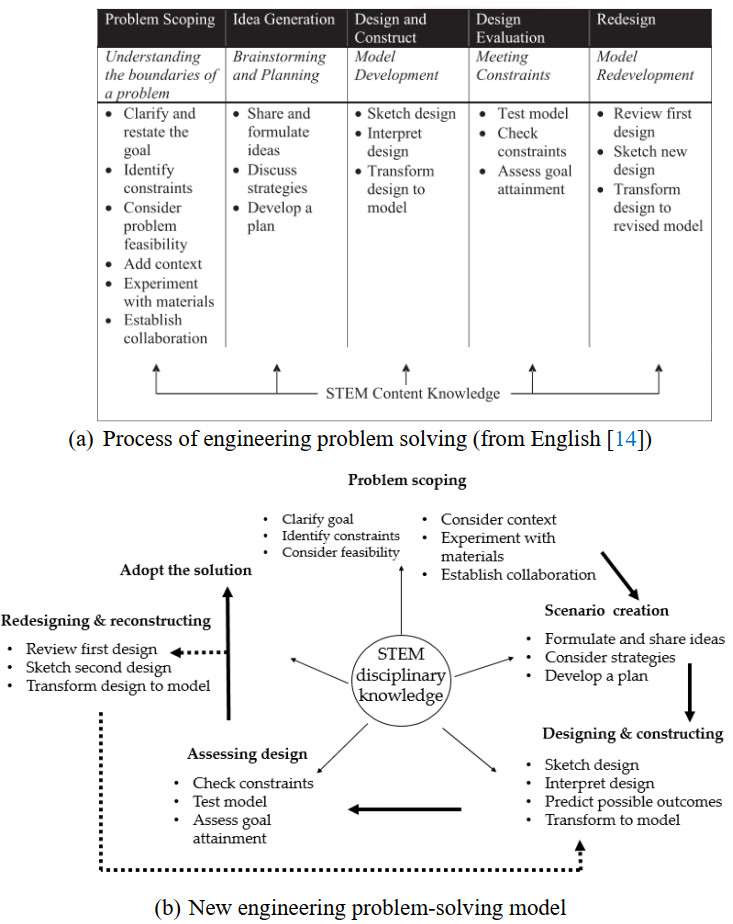









 DownLoad:
DownLoad:


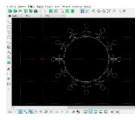


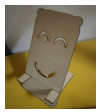
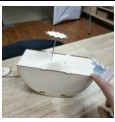
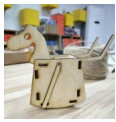


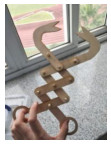
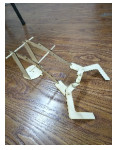
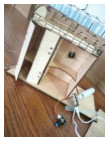
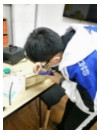
 The teacher introduces the ancient Chinese structure. By design, ancient Chinese wood furniture is a type of non-excessive material that can achieve structural stability and earthquake resistance. It all depends on a structure, i.e., slugs. Next, the teacher displays a picture of the structure of tenon and mortise and introduces this type of plug-in structure.
The teacher introduces the ancient Chinese structure. By design, ancient Chinese wood furniture is a type of non-excessive material that can achieve structural stability and earthquake resistance. It all depends on a structure, i.e., slugs. Next, the teacher displays a picture of the structure of tenon and mortise and introduces this type of plug-in structure.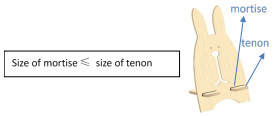 Teacher: Leads students to determine the relationship between the mortise and tenon and introduces the concept of pore size. Simultaneously, the students are instructed to implement a design plan to mark the size difference for the tight fit of the mortise and tenon. Student: Sketches and designs using a computer.
Teacher: Leads students to determine the relationship between the mortise and tenon and introduces the concept of pore size. Simultaneously, the students are instructed to implement a design plan to mark the size difference for the tight fit of the mortise and tenon. Student: Sketches and designs using a computer.









